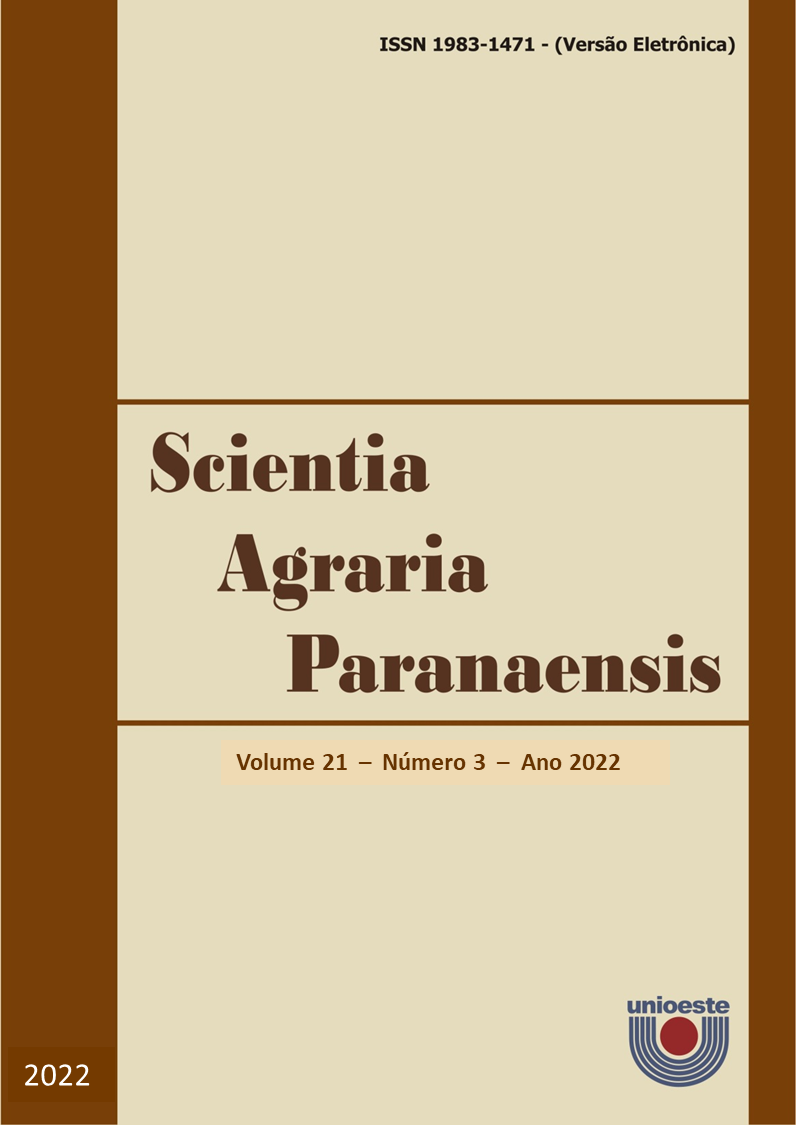Rhizogenesis in black raspberry stem cuttings: interaction between substrates and lesions at the base of the cuttings
DOI :
https://doi.org/10.18188/sap.v21i3.29700Résumé
The black raspberry tree has a great potential for cultivation in Brazil, as it produces large amounts of fruit, intended mainly for the processing of fine products. However, its propagation is an obstacle to the establishment of commercial plantations. Given the above, the objective of the present work was to evaluate rhizogenesis in stem cuttings, with the interaction between substrates and types of basal cuts. The experiment was conducted in a screened condition in the Institution itself. Stem cuttings were taken from mother plants in the orchard of the experimental farm. The experimental design used in the experiment was randomized blocks, consisting of a 4x2 factorial scheme, with four substrates (sand, rice husks, commercial substrate and earth) x two basal cuts (straight and bevel). After thirty days, the percentage of rooted cuttings (%), average number of roots and shoots per cutting, length of the largest root (cm) and fresh and dry biomass of the shoot and root system (g) were evaluated. Black raspberry can be propagated asexually, with cuttings without injuries at the base and rooted in gully soil or Plantmax®.
Téléchargements
Publié-e
Comment citer
Numéro
Rubrique
Licence
Aviso de Direito Autoral Creative Commons
Política para Periódicos de Acesso Livre
Autores que publicam nesta revista concordam com os seguintes termos:
1. Autores mantém os direitos autorais e concedem à revista o direito de primeira publicação, com o trabalho simultaneamente licenciado sob a Licença Creative Commons Attribution que permite o compartilhamento do trabalho com reconhecimento da autoria e publicação inicial nesta revista.2. Autores têm autorização para assumir contratos adicionais separadamente, para distribuição não-exclusiva da versão do trabalho publicada nesta revista (ex.: publicar em repositório institucional ou como capítulo de livro), com reconhecimento de autoria e publicação inicial nesta revista.
3. Autores têm permissão e são estimulados a publicar e distribuir seu trabalho online (ex.: em repositórios institucionais ou na sua página pessoal) a qualquer ponto antes ou durante o processo editorial, já que isso pode gerar alterações produtivas, bem como aumentar o impacto e a citação do trabalho publicado (Veja O Efeito do Acesso Livre).
Licença Creative Commons
Esta obra está licenciada com uma Licença Creative Commons Atribuição-NãoComercial-CompartilhaIgual 4.0 Internacional, o que permite compartilhar, copiar, distribuir, exibir, reproduzir, a totalidade ou partes desde que não tenha objetivo comercial e sejam citados os autores e a fonte.


